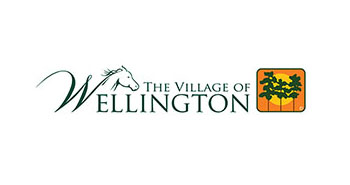Wellington’s Equestrian Preserve Committee gave input Wednesday, Jan. 6 on the village’s plans for a new golf cart ordinance.
Assistant Planning, Zoning & Building Director Michael O’Dell has been making the rounds of local public forums, boards and advisory committees as he seeks input on the proposed regulations. A presentation on the public input is expected to head to the Wellington Village Council in the spring.
Last week’s presentation was much the same as the one offered at previous forums on the topic. Now that pathways of more than 12 feet wide are being completed, and others are being widened from their current eight-foot width, it is expected that golf cart use will grow. The proposed rules would apply to use not only on the pathways, but elsewhere in the village.
O’Dell’s slides explain that state law makes it legal to use golf carts on local streets that have a posted speed limit of less than 25 mph, within HOAs, on a golf course or private property.
If a golf cart is street legal, it is a different type of vehicle in the eyes of the law. It will have a vehicle identification number, a license plate and must meet other motor vehicle requirements and follow the same regulations as a car. Such vehicles can be driven on any roadway with a posted speed limit of 35 mph or less. They must be driven by a licensed driver. Such vehicles are actually considered a slow-moving car and, therefore, are not permitted on the pathways.
Wellington is currently accepting input to develop regulations to allow traditional golf carts to be legally used on its pathways. This is of particular interest to the equestrian community. Golf carts have been a source of internal transportation for local equestrians for years.
The draft ordinance recommends a maximum speed of 15 mph on pathways, and requires drivers to be licensed and at least 16 years old. “The council is trying to help the village by adopting something that works for the community in Wellington,” O’Dell said.
Further, the ordinance also provides occupancy limitations, requires a Wellington registration sticker, certain safety equipment and the signature of the golf cart’s owner to acknowledge that the owner understands the rules.
Committee members had a wide-ranging number of questions: Where does the money from the fee go? (To the village to fund the registration program.) How do you prove you have insurance? (You do so when you get the sticker from the village.) Can you legally use golf carts on the swale if it is private property or the property of a neighbor? (Yes, but it is trespassing if you don’t have their permission.) How does this relate to scooters? (They are not legally allowed on the paths.)
Other questions with less easy answers included, is it legal to talk on a cell phone while operating a golf cart and what if the council wants to raise the price?
O’Dell noted that allowing the use of golf carts on the pathways would be of great benefit to the equestrian community. It would also establish rules and eliminate the current quasi-legal nature of golf cart use.
The committee was generally open to the effort, suggesting that operating the carts at night would be nice for departing equestrian events without having to sit in a traffic jam. They pointed out that the 16-year-old age requirement and the provision requiring a license could be a problem for out-of-towners where the law is 14 in their state. Finally, the committee felt that some sort of test should be required in order to get a golf cart license.
These suggestions will be included in a report from all the input sessions throughout the village and presented to the council for discussion and a final decision.








